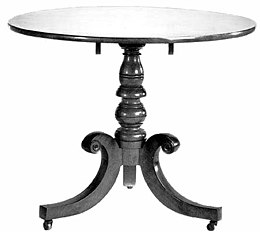
Back مؤتمر سينيكا فولز Arabic Declaración de Seneca Falls AST Convenció de Seneca Falls Catalan Seneca Falls Convention German Convención de Seneca Falls Spanish Seneca Fallseko konbentzioa Basque کنوانسیون سنکا فالز Persian Seneca Fallsin konferenssi Finnish Convention de Seneca Falls French ועידת סנקה פולס HE


| Part of a series on |
| Feminism |
|---|
 |
|
|
The Seneca Falls Convention was the first women's rights convention.[1] It advertised itself as "a convention to discuss the social, civil, and religious condition and rights of woman".[2][3] Held in the Wesleyan Chapel of the town of Seneca Falls, New York, it spanned two days over July 19–20, 1848. Attracting widespread attention, it was soon followed by other women's rights conventions, including the Rochester Women's Rights Convention in Rochester, New York, two weeks later. In 1850 the first in a series of annual National Women's Rights Conventions met in Worcester, Massachusetts.
Female Quakers local to the area organized the meeting along with Elizabeth Cady Stanton, who was not a Quaker. They planned the event during a visit to the area by Philadelphia-based Lucretia Mott. Mott, a Quaker, was famous for her oratorical ability, which was rare for non-Quaker women during an era in which women were often not allowed to speak in public.
The meeting comprised six sessions including a lecture on law, a humorous presentation, and multiple discussions about the role of women in society. Stanton and the Quaker women presented two prepared documents, the Declaration of Sentiments and an accompanying list of resolutions, to be debated and modified before being put forward for signatures. A heated debate sprang up regarding women's right to vote, with many – including Mott – urging the removal of this concept, but Frederick Douglass, who was the convention's sole African American attendee, argued eloquently for its inclusion, and the suffrage resolution was retained. Exactly 100 of approximately 300 attendees signed the document, mostly women.
The convention was seen by some of its contemporaries, including featured speaker Mott, as one important step among many others in the continuing effort by women to gain for themselves a greater proportion of social, civil and moral rights,[4] while it was viewed by others as a revolutionary beginning to the struggle by women for complete equality with men. Stanton considered the Seneca Falls Convention to be the beginning of the women's rights movement, an opinion that was echoed in the History of Woman Suffrage, which Stanton co-wrote.[4]
The convention's Declaration of Sentiments became "the single most important factor in spreading news of the women's rights movement around the country in 1848 and into the future", according to Judith Wellman, a historian of the convention.[5] By the time of the National Women's Rights Convention of 1851, the issue of women's right to vote had become a central tenet of the United States women's rights movement.[6] These conventions became annual events until the outbreak of the American Civil War in 1861.
- ^ Dumenil, 2012,
p. 56, which says, "The exclusion of women delegates from the London [anti-slavery] convention in 1840 had a decided impact on the events that led to the first women's rights convention, held in Seneca Falls, New York, eight years later… Well before the 1848 convention, reformers had agitated for improved economic and legal rights for women".
Other scholarly sources that describe Seneca Falls as "the first women's rights convention" include Wellman, 2004 (the book's title itself include those words); Isenberg, 1998, p. 1; and McMillen, 2008, p. 115.
No scholarly source describes an earlier meeting as a "women's rights convention". Bonnie S. Anderson, in Joyous Greeting: The First International Women's Movement 1830–1860, Oxford University Press, 2000, makes no mention of an earlier convention in Europe or elsewhere.
The Seneca Falls convention was the first that was organized by women explicitly for the purpose of discussing women's rights as such. It was not, however, the first convention at which women's rights were among the topics that were discussed:
- The Anti-Slavery Convention of American Women in 1837 held in New York City, defended the right of women to speak out on the great issues of the day and specifically in opposition to slavery.
- The Conference of Badasht in Persia, a foundational meeting of the Bábí religion at which Táhirih advocated women's rights, supported by Quddús and the standards set were endorsed by the Báb and Baháʼu'llah which became norms in the Baháʼí Faith and echo still in Persian culture,
- and the National Liberty Party Convention in New York at which Gerrit Smith said that women should be able to vote.
- ^ Wellman, 2004, p. 189
- ^ "Report of the Woman's Rights Convention – Women's Rights National Historical Park (U.S. National Park Service)".
- ^ a b McMillen, 2008, p. 102,
- ^ Wellman, 2004, p. 192
- ^ Buhle, 1978 p. 90
© MMXXIII Rich X Search. We shall prevail. All rights reserved. Rich X Search